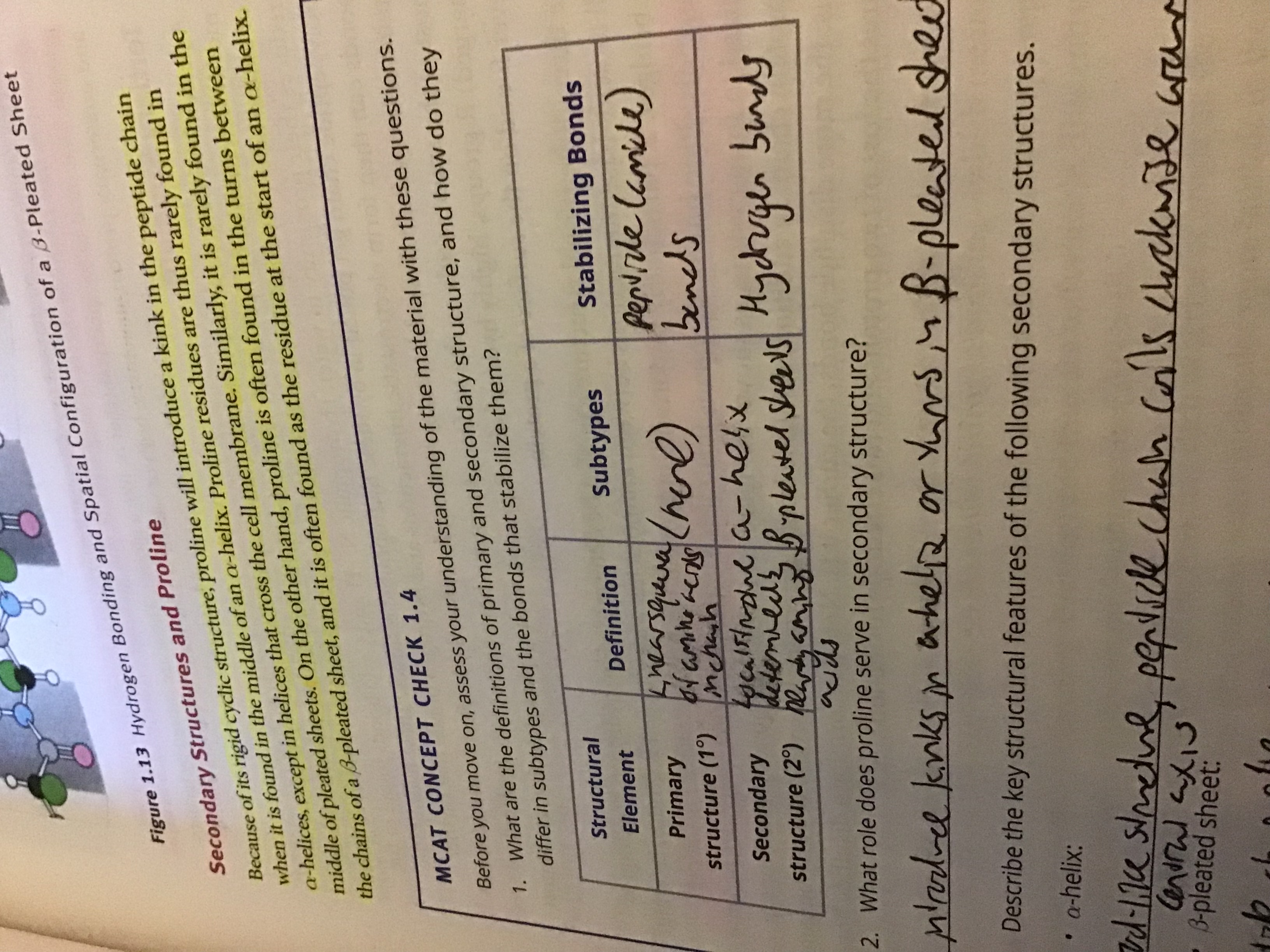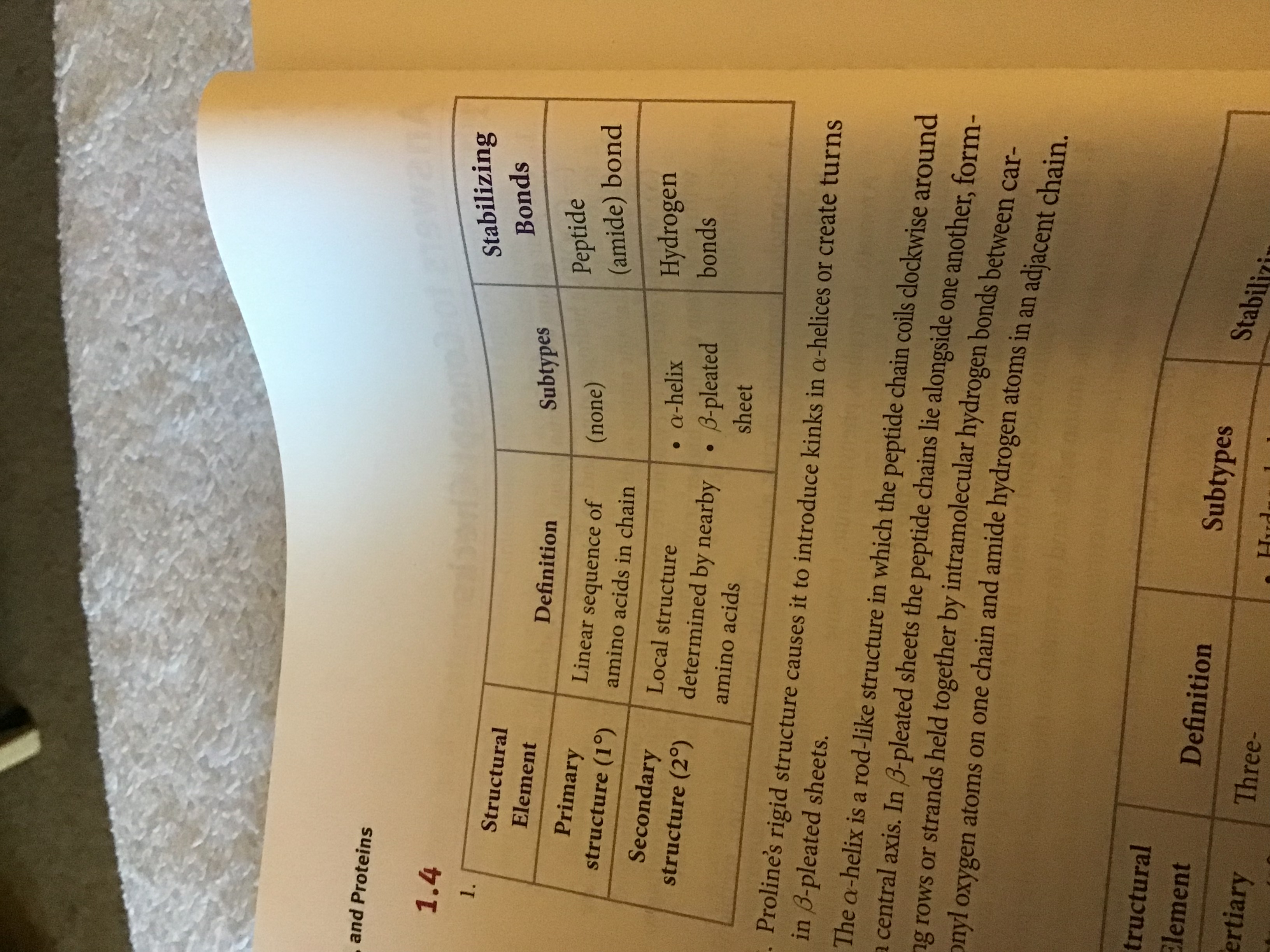Amino Acids and Peptide Bonds
1/3
Earn XP
Name | Mastery | Learn | Test | Matching | Spaced |
|---|
No study sessions yet.
4 Terms
What differentiates an amino acid, a dipeptide, a tripeptide, an oligopeptide, and a polypeptide?
An amino acid is a single unit, a dipeptide has two amino acids, a tripeptide has three, an oligopeptide has few (less than 20), and a polypeptide has many (greater than 20).
What molecule is released during the formation of a peptide bond?
Water (H2O)
If chymotrypsin cleaves at the carboxyl end of phenylalanine, tryptophan, and tyrosine, how many oligopeptides would be formed from the cleavage of val-phe-glu-lys-tyr-phe-trp-ile-met-tyr-gly-ala?
Four: val-phe, glu-lys-tyr, ile-met-tyr, gly-ala

What are the definitions of primary and secondary structure and how do they differ in subtypes and the bonds that stabilize them?
Primary structure, linear sequence of amino acids in chain subtypes, none stabilizing bonds, peptide amid bond, secondary structure, local structure, determined by nearby, amino, acids subtypes, alpha, helix, beta, pleated shit, stabilizing, bonds, hydrogen bonds
